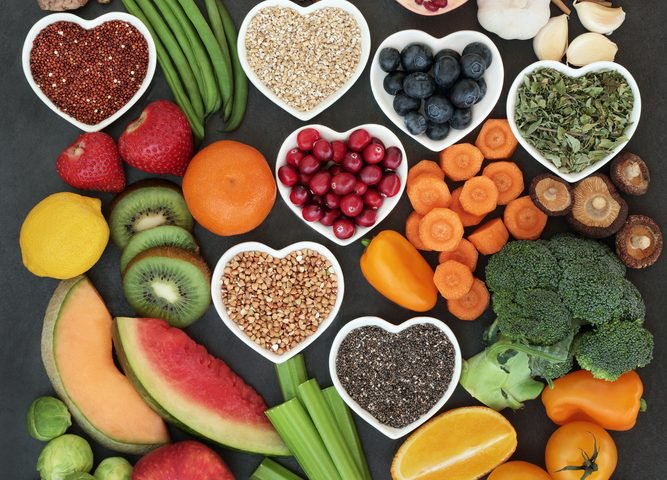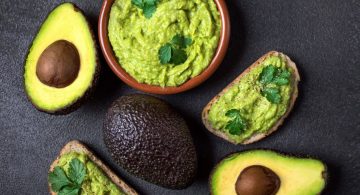Food Combining 101: Covering The Basics

Food combining is a simple approach to meal planning that optimizes the digestive process, and promotes effective detoxification of the body. When we food combine, we avoid combinations of foods that don’t digest well together. We choose food combinations that digest easily, and then leave the body as quickly and efficiently as possible. If you ever feel bloated and sleepy after a meal, poor food combinations and a sluggish gut may be at the root of your troubles. And while steak and potatoes or spaghetti and meatballs are typical fare in many U.S. households, they’re actually considered not-so-ideal choices when it comes to food combining.
Many weight loss-focused dietary approaches emphasize calories or fat grams without taking into account both the quality of foods eaten, and also how well those foods actually digest when eaten at the same time. Food combining for weight loss is an ingenious way to streamline the digestive process while supporting the overall health of your digestive tract. It’s basically all about making your meals as simple as possible for ease of digestion — while still being super enjoyable and satisfying. And in terms of maximizing the benefits of your colonic treatments, food combining works in tandem with your daily green juice, and a diet of fresh, plant-based foods, to loosen up an impacted bowel and help usher that waste out of the body as effortlessly and seamlessly as possible.
It’s important to remember that digesting food requires more energy than virtually any other function in the body. By choosing foods — and food combinations — that ease the body’s digestive burden as much as possible, we free up tons of energy for healing, recovery, and other vital bodily functions. Basically, food combining can help improve your digestive health, while significantly boosting your overall energy levels, too.
So, instead of counting calories or fretting about portion sizes, it’s best to focus on eating fresh, high quality foods in easy-to-digest combinations. And don’t worry: there’s always a bit of a learning curve when it comes to getting the hang of food combining at first. All it takes is a little time and practice, and it’ll be second nature before you know it.
Let’s cover the basics of what you should know about food combining to help strengthen your digestive process, while getting the most out of your colonic treatments to boot.
1. Eat Fruit Alone, And Always Have Juices On An Empty Stomach
Raw fruit and fresh juices digest very quickly, and as such, they’re best consumed alone or with other non-starchy vegetables. A simple green smoothie, for instance, made with fresh fruit and leafy greens, is a great choice. Otherwise, eat fruit on an empty stomach, and wait about thirty minutes or so before following up with another food group to avoid gas and fermentation in the gut.
2. Don’t Combine Proteins And Starches
Food combining hinges on the basic premise that fruits, starches, and proteins all digest at different rates, while requiring different enzymes to fully break down. Proteins like eggs, wild fish, and organic meats require an acidic environment for optimal digestion, while taking about four hours to fully exit the stomach. Starches like sweet potatoes, avocado, quinoa, and brown rice need an alkaline environment for proper digestion, and take about three hours to leave the stomach. So, when starches and proteins are eaten together, the digestive process slows down as the body works overtime to break down this super complex food combination. As a rule, it’s best to remember to start your meals with a large leafy green salad and raw veggies, and then choose whether you want a starch-based meal or a protein-based meal. Then pair up your choice with a sizeable portion of non-starchy veggies, and you’re good to go.
3. Leafy Greens & Non-Starchy Veggies Are Neutral Foods
You can eat as much of these foods as you want, and you can eat them with anything — easy!
4. Legumes Combine Best As A Starch
Legumes like lentils, peas, and beans are a combination of protein and starch, and tend to be more difficult foods to digest. You can eat these with grains, avocado, and other starchy vegetables — bearing in mind that this makes for a pretty complex meal. The best way to eat legumes is soaked and sprouted before cooking, and with a large salad and lots of non-starchy veggies instead.
5. Combine Nuts & Dried Fruits With Non-Starchy Vegetables
Nuts, seeds, nut butters, and dried fruits can be difficult for some people to digest. If you do handle them well, combine them with a big salad and non-starchy veggies to maximize digestion.
6. Neutral Bonus Foods
For the purposes of food combining, sea salt, herbs, spices, raw honey, dark chocolate, and condiments like mustard, tamari, and hot sauces are neutral. These foods offer a great way to spice up your meals in fun and flavorful ways without compromising your digestion.
While it may seem a bit complicated at first, food combining principles are actually pretty easy — especially once you’re in the swing of things. Start with the basics, give yourself time to adjust, and you’ll see what a major difference a few simple changes can make in terms of meeting your health goals. And that’s definitely something you can feel good about.



